Today’s Current Affairs:18th October 2025 for UPSC IAS exams, State PSC exams, SSC CGL, State SSC, RRB, Railways, Banking Exam & IBPS, etc
Table of Contents
We Rise Initiative:
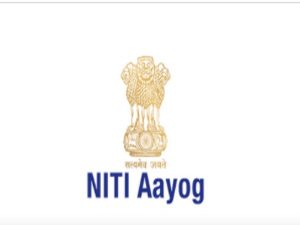
NITI Aayog’s Women Entrepreneurship Platform (WEP) and DP World announced a joint initiative ‘We Rise Initiative.
- The Women Entrepreneurs Reimagining Inclusive and Sustainable Enterprises (We Rise) initiative was launched by NITI Aayog and DP World.
- It was launched under the aegis of WEP’s Award to Reward (ATR) initiative.
- It aims to help women entrepreneurs in India to scale their businesses globally through trade facilitation, mentorship, and strategic partnerships.
- As part of this effort, WEP and DP World have joined hands to empower product centric women entrepreneurs.
- It is unique public-private collaboration focused on expanding trade access and unlock opportunities for women businesses to grow exponentially.
- Women Entrepreneurship Platform was incubated in NITI Aayog in 2018 as an aggregator platform, transitioned into a public-private partnership in 2022.
- It serves as a national aggregator to strengthen India’s women entrepreneurship ecosystem and make women-led development a reality.
Hygrocybe Pellucida:
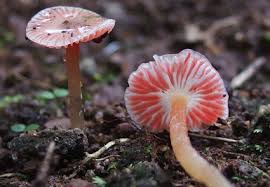
Hygrocybe pellucida, a rare fungi species, was sighted for the first time in Telangana’s Kawal Tiger Reserve.
- It is a fungi species characterised by their bright, waxy and often vividly coloured fruiting bodies.
- It is typically found in unimproved grasslands, mossy forest floors and other nutrient-poor habitats and commonly known for wax cups.
- It was described as a new species in the Hygrophoraceae family from Kerala during 2024.
- The genus Hygrocybe is a well-known genera of agarics with 350 listed species and distributed worldwide.
- Kawal Tiger Reserve is located in the Telangana State along the banks of river Godavari, forming part of the Deccan peninsula-central highlands.
- The reserve is nestled in the Sahyadri Mountain Ranges.
- The government of India declared Kawal Wildlife Sanctuary a Tiger Reserve in 2012.
- The reserve is the catchment for the rivers Godavari and Kadam, which flow towards the south of the sanctuary.
Gulf of Kutch:
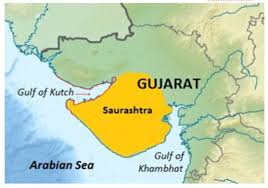
According to a recent report, the long-term survival of dugongs in the Gulf of Kutch and the Andaman and Nicobar Islands is highly uncertain or challenging.
- Gulf of Kutch is an inlet of the Arabian Sea.
- It is located along the west coast of India, in the Jamnagar district of Gujarat.
- It divides Kutch and the Kathiawar peninsula regions of Gujarat.
- It stretches for 99 miles and is famous for the coral reefs surrounding the 32 islands.
- A unique feature of this region is the tidal range, which generates fast currents of about 2.5 m per second.
- It is a region with the highest potential of tidal energy generation.
- It is rimmed with mudflats, and many small islands rise from its waters.
- The Gulf of Kutch, occupying an area of 7300 sq.km. is biologically one of the most productive and diversified habitats along the west coast of India.
- The southern shore has numerous islands and inlets which harbor vast areas of mangroves and coral reefs with living corals.
- The northern shore with numerous shoals and creeks also sustains large stretches of mangroves.
- The western extremity of the Gulf consists of a vast complex of marshland criss-crossed by innumerous creeks.
- Marine National Park is situated on the southern shore of the Gulf of Kutch. It is the 1st National Marine Park of India.
- Dugongs are the only herbivorous mammals found in India’s marine ecosystems.
- It is known as the sea cow but resembles a cross between a seal and a whale, and is distributed through the Indo-Pacific region.
South Atlantic Anomaly:

A giant dent in Earth’s magnetic field, called the South Atlantic Anomaly, is continuing to expand, according to the latest data from a trio of satellites monitoring our world.
- It is a unique location on Earth where the magnetic field is weaker than normal.
- It is southeast of South America and southwest of Africa. In this area, the planet’s magnetic field dips down.
- It was first identified in the 19th century.
- Earth’s magnetic field acts like a protective shield around the planet, repelling and trapping charged particles from the Sun.
- SAA exists because the Earth’s inner Van Allen radiation belt comes closest to the planet’s surface, causing an increased flux of energetic particles.
- This leads to the penetration of solar energetic particles deep into Earth’s atmosphere, posing severe problems for airplanes and ships’ positioning systems as well as spacecraft electronic systems.
- The Van Allen radiation belt is a zone of energetic charged particles, most of which originate from the solar wind.
- The particles are captured by and held around a planet by that planet’s magnetic field.
- It surrounds Earth, containing a nearly impenetrable barrier that prevents the fastest, most energetic electrons from reaching Earth.
- The outer belt is made up of billions of high-energy particles that originate from the Sun and become trapped in Earth’s magnetic field, an area known as the magnetosphere.
Gastroenteritis:
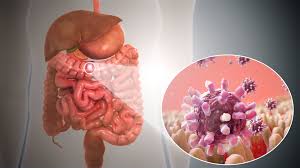
A recent study on the impact of the indigenous rotavirus vaccine in India found marked reductions in rotavirus-based gastroenteritis in sites across the country.
- Gastroenteritis is an inflammation of the lining of the stomach and intestines.
- It is usually not serious in healthy people, but it can sometimes lead to dehydration or cause severe symptoms.
- There can be many different causes of gastroenteritis:
- Viruses
- Bacteria
- Parasites
- Chemicals
- Reactions to certain medicines and food
- Viral gastroenteritis is the most common type. It can be caused by many different viruses, including noroviruses and rotaviruses.
- When gastroenteritis is caused by consuming foods or drinks contaminated with viruses, bacteria, parasites, or chemicals, this is called food poisoning.
- The viruses, bacteria, and parasites that cause gastroenteritis can also spread from person to person.
- The symptoms of gastroenteritis include:
- Diarrhea
- Pain or cramping in your abdomen (belly)
- Nausea
- Vomiting
- Sometimes fever
- Usually, people with gastroenteritis get better on their own, with rest and plenty of fluids and electrolytes.
- Your provider may suggest that you take a probiotic.
- Studies suggest that some probiotics may help shorten a case of diarrhea.
- People with more severe symptoms may need medicines to control nausea or vomiting.
- Providers may also give other medicines for certain types of gastroenteritis, such as antibiotics for some bacterial types and antiparasitic medicines for some parasitic types.
International Union for the Protection of New Varieties of Plants:

The report released by GRAIN documented how a growing number of FTAs compel countries to adopt plant variety protection standards set by the 1991 UPOV Convention.
- UPOV is an intergovernmental organization established in 1961 to provide an effective system of plant variety protection.
- It administers the UPOV Convention, which provides a legal framework for plant variety protection implemented by its members.
- Under this framework, breeders of new plant varieties are granted an intellectual property right known as the breeder’s right, which incentivizes innovation in plant breeding.
- The UPOV Convention entered into force in 1968 and was revised in 1972, 1978 and 1991, each time strengthening plant breeders’ rights.
- Governance of International Union for the Protection of New Varieties of Plants (UPOV):
- The UPOV member countries hold annual meetings of the UPOV Council, a permanent body under the UPOV Convention.
- Other UPOV bodies include the Consultative Committee, the Administrative and Legal Committee, and the Technical Committee.
- Member countries: 80 members have become member of UPOV. (India is not a member of this organization)
- Headquarter: Geneva (Switzerland).
Kolam Tribe:
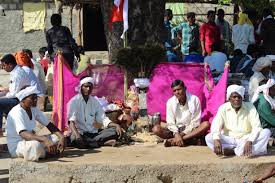
A pilot bamboo plantation project was initiated to restore traditional livelihoods of Kolam tribal people in Adilabad district of Telangana.
- Kolam tribes, also known as Kolamboli, Kulme and Kolmi, occupy a major portion of Madhya Pradesh.
- These tribal groups are reckoned as scheduled tribes and apart from Madhya Pradesh they reside in some parts of Maharashtra and Andhra Pradesh.
- They are listed as Particularly Vulnerable Tribal Group (PVTG).
- Around the twelfth century, the Kolam served as priests for the Gond, representing some of their important gods.
- It is generally accepted that the Kolam descended from the original population in the area.
- Since they now live near the Gond, they have adopted much of the Gond lifestyle.
- The Kolam people are divided into different clans, like Chal Deve, Pach Deve, Saha Deve, and Sat Deve.
- Marriages between the same clans are not permissible.
- The Kolams use the name of their clans as their surnames.
- Their society is patrilineal, meaning that the line of descent is traced through the males.
- The Kolam are mainly farmers and forest workers. In times past, they used shifting cultivation on the hill slopes.
- They speak a Dravidian language called Kolami, and nearly all of the adults also speak Marathi, Telugu, or Gondi.\
- The Kolam people celebrate different rituals that include Matya or Churaghali, Bai-Baki, Sati, Jaitur Pooja, Waghai Pooja etc.
Codex Committee on Spices and Culinary Herbs:
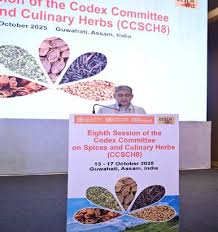
The 8th Session of the Codex Committee on Spices and Culinary Herbs (CCSCH8) concluded successfully in Guwahati.
- It is one of the subsidiary bodies under Codex Alimentarius Commission (CAC).
- It is an exclusive committee for spices and culinary herbs to elaborate standards in harmonization with worldwide standards.
- The committee was established in July 2013 by the CAC at its 36th meeting held at Rome.
- India is the host country and the Spices Board, Kochi acts as the secretariat for CCSCH.
- Mandates of Codex Committee on Spices and Culinary Herbs:
- To elaborate worldwide standards for spices and culinary herbs in their dried and dehydrated state in whole, ground, and cracked or crushed form;
- To consult, as necessary, with other international organizations in the standards development process to avoid duplication.
- Codex Alimentarius Commission is the international food standards-setting body.
- It was established jointly by the Food and Agriculture Organization (FAO) and the World Health Organization (WHO) in May 1963.
- Objective is Protecting consumer’s health and ensuring fair practices in the food trade.
- Currently the CAC has 189 Codex Members made up of 188 Member Countries and 1 Member Organization (The European Union).
- The Commission meets in regular session once a year, alternating between Geneva and Rome.
- It is funded through the regular budgets of WHO and FAO.
- Headquarters: Rome.
Uttarakhand Hosts AI Impact Summit Ahead of India–AI 2026:
The Uttarakhand AI Impact Summit 2025 was held on October 17 in Dehradun, marking a crucial pre-summit event ahead of the India–AI Impact Summit 2026. The summit, organized by the Department of IT, Government of Uttarakhand in collaboration with the IndiaAI Mission under MeitY, showcased India’s push toward responsible and inclusive growth in Artificial Intelligence.
The event focused on positioning AI as a force for public good, touching upon its applications in,
- Governance: Using AI for managing massive events like the Kumbh Mela
- Education: Personalized and accessible learning platforms
- Healthcare and disaster management
- Rural empowerment through AI-backed agricultural and financial tools
Abhishek, Mandhana Win ICC Player of the Month October 2025:
Indian cricket celebrated a proud moment in September 2025 as Abhishek Sharma and Smriti Mandhana were named ICC Players of the Month for their exceptional performances in international cricket. Both left-handed openers, they stood out with match-winning knocks and career milestones that resonated across global rankings and fan votes.Abhishek Sharma, 25, emerged as one of the brightest stars in the Asia Cup T20I tournament, scoring 314 runs in 7 matches at an average of 44.85 and a phenomenal strike rate of 200.His dynamic batting not only won him the Player of the Tournament title but also saw him reach a record-breaking 931 rating points in the ICC Men’s T20I Batting Rankings—the highest ever by any player in the format at the end of the Super Fours stage.
LIC Launches Jan Suraksha and Bima Lakshmi Insurance Plans:
The Life Insurance Corporation of India (LIC) has launched two new insurance plans—Jan Suraksha Plan (880) and Bima Lakshmi Plan (881). These are the first policies introduced by LIC under the new GST regime, reflecting its efforts to expand financial protection across diverse income and gender groups. While Jan Suraksha caters to the lower-income segment, Bima Lakshmi is an exclusive offering for women, providing a blend of protection, savings, and health benefits.. The LIC Jan Suraksha Plan is a life micro-insurance endowment plan. It offers a lump sum at maturity and life cover during the policy term.The plan includes guaranteed additions at the rate of 4% of the annualised premium each year, helping build savings over time.
PM Modi Inaugurates ₹13,430 Cr Projects in Kurnool, Andhra Pradesh:
Prime Minister Narendra Modi inaugurated, laid foundation stones, and dedicated to the nation development projects worth approximately ₹13,430 crore on October 16, 2025. These multi-sectoral initiatives aim to transform Andhra Pradesh into a key pillar of India’s economic and technological future, with major announcements spanning energy, transport, defence, and digital connectivity.




